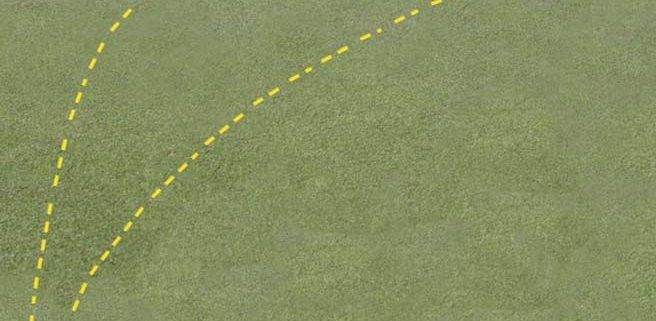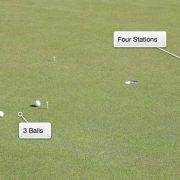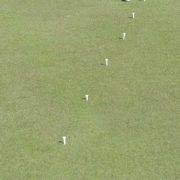Reading Greens and Putting Strategies
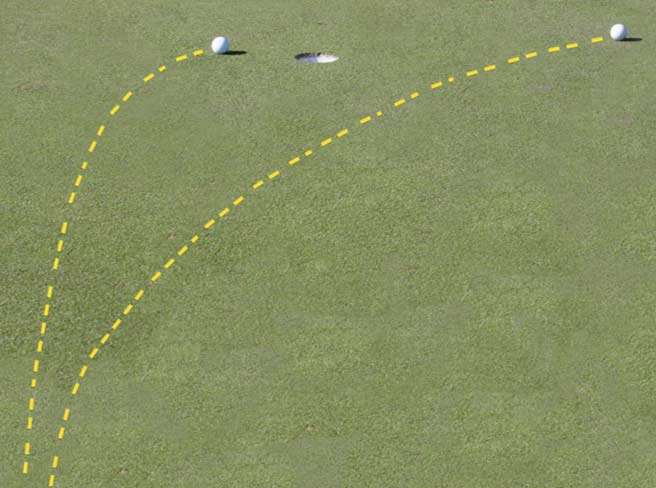
My first piece of advice for relative beginners reading the slope of greens is to double whatever break you see. Higher handicappers rarely play enough break, and resort to either hitting putts too hard, missing routinely on the low side of the hole, or both. This is a critical mistake if it’s happening with regularity.
When you miss a putt on the low side of the hole, at the very end of the putt’s travels, the ball is rolling away from the hole. Every inch that the ball rolls is an extra inch you’ll have to deal with on your next putt. Conversely, a putt missed on the high side of the hole is moving toward the hole, generally leaving you with much shorter return putts.
In terms of reading greens, I suggest removing your blinders and first take a look at the entire green complex and the general lay of the land. I would say just take an extra moment to think like a golf course architect. Most greens are not designed to retain water, but to drain water into sensible locations. Notice low-lying areas, drainage areas, water hazards, and other areas where it might make sense for an architect to drain the water from the green. This will give you a general pulse on the overall slope of the green.
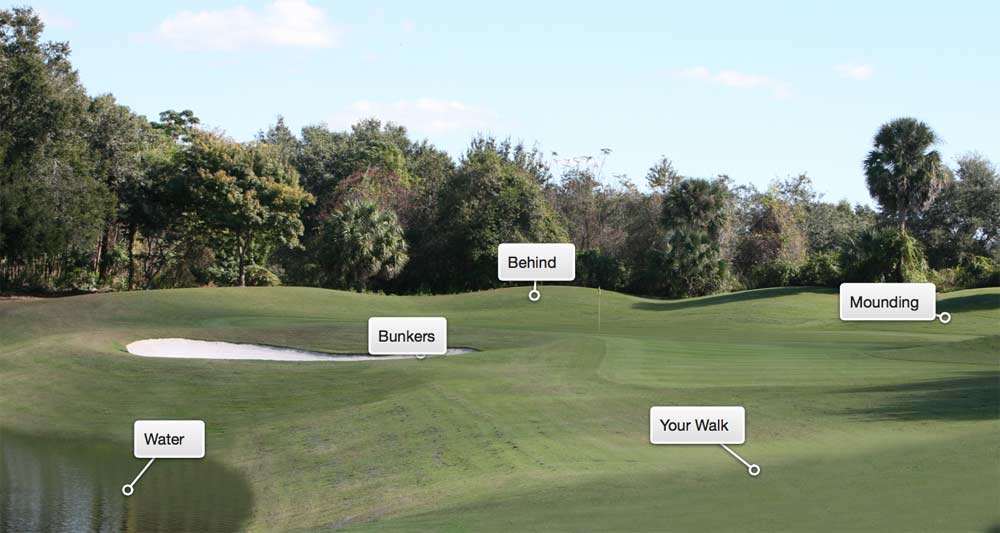
As we take a look at your putt more specifically, it’s important to note that break is a function of the speed the ball is traveling. Generally the ball is traveling its fastest immediately after leaving the putter face and moving it’s slowest toward the end of the putt. This means that X amount of slope will have much more effect on the roll of the ball at the end of the putt than in the beginning of the putt. To this end, you should assign more value to slope around the hole than the slope near the putt’s starting point.
If time permits, take a walk over and look at the putt from behind the hole. As you crouch down, the circular hole appears to be more like a slit, or even a line on the green. Notice if this line is horizontal or if it appears to be at an angle of some kind. This will provide a strong indication of the slope around the hole.
If you’re playing on bent grass, or generally in cooler climates, then grain will not be much of a factor. If you’re putting on greens with Bermuda grass or with other heavier, grainy types of grass, take a look at the lip of the hole itself. Often, especially as the day progresses, one half of the hole will remain clean while the other half of the hole appears to be beaten up. If this is the case, this tells you that the grain of the grass is growing from the clean side to the dirty side of the hole. This happens because of the way cups are cut, with half the hole having trimmed the blades of grass, while with the other half, the roots of the grass have been severed.
As you walk around your putt, also notice the coloration in the grass. Lighter shades of green are down grain while darker shades of green are into the grain. This occurs because of how sun light reflects, or doesn’t reflect, off the blades of grass depending on your vantage point. In simple terms, consider the effects of grain on your putts much like the effects of wind on your full shots. Putts into the grain will be slow, while putts down grain will be fast. Water drainage has a large effect on the direction of grain, so this can provide yet another clue as to the slope on the green.
Once again, only if time permits, you might take a look at your putt from a side angle as well. Stand on the lower side of the putt for this, as I believe you’ll see more detail than you will from the high side. This will give you an idea of the uphill versus downhill nature of the putt and help you with speed control. Once you read your putt, be sure to play enough break, select a starting line and treat every putt as if it were straight.
In summary, most players don’t account for enough break on the putting green. Missing on the high side of the hole will help to leave you shorter return putts than missing on the low side. When reading greens, take a moment to think like an architect and look at the overall landscape considering water drainage. The amount a putt will break is a function of the speed that it is traveling. If time permits or while other are playing, take a look around the hole because this is where the ball will be traveling slowest, and perhaps breaking the most as it loses speed. Look at the hole itself and the coloration of the grass to get an idea of the direction of the grain. Once you have your read and your line, set up squarely and treat every putt as if it were straight.

